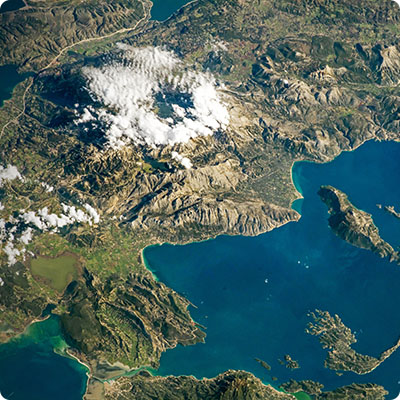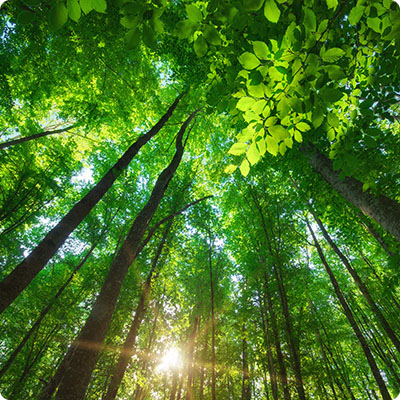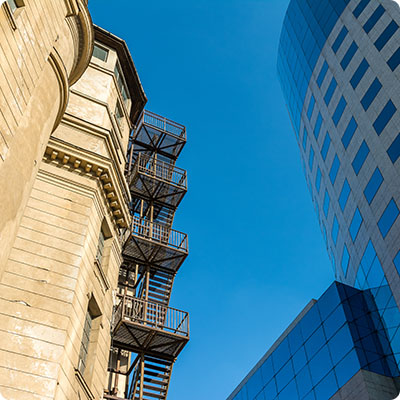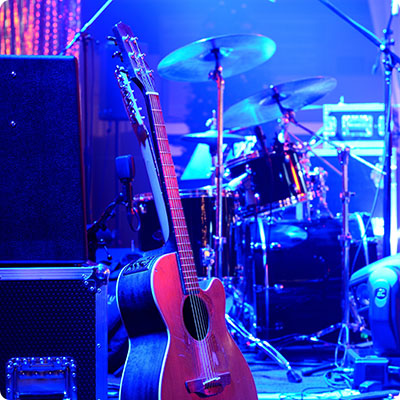Original wealth
In the heart of the Sarawak forests, the Punans have preserved a habitat with origins dating back thousands of years. Between two migrations, these nomads build rudimentary shelters of branches on stilts to protect themselves from animal attacks. Ancestors of the Malays, the Dayak are famous for their longhouses. Often built in marshy areas, these houses are built on stilts and accessed via a carved wooden ladder. The general framework is made of tropical wood posts and beams. Wooden planks, sheets of bark or strips of woven bamboo are then added to form the walls, which are pierced by windows. The steep roof is made of palm thatch. Up to 110 m long, these vast dwellings are also famous for their decorative work. The wooden posts and frames are elegantly carved, and the exteriors are often adorned with paintings of mythical, protective animals. An ornamental aspect also found in the wooden totem poles protecting the dwellings. Together, these longhouses form villages or kampongs. These villages are also organized around sacred elements: cemeteries, spirit houses and sandung, raised coffins painted in bright colors. A tradition much in evidence in Kalimantan. The 8 m-high Sungkok Apalin longhouse in Kalimantan is the oldest on the island, followed by the Tumbang Malahoi longhouse in Sungai Kahayan, whose iron-wood structure is almost 150 years old! Borneo is also home to numerous villages and floating markets, the strongholds of fishermen, such as Pulau Tekenang. In South Kalimantan, the Banjar people have developed astonishing architecture, testimony to a highly codified and hierarchical society. At the heart of their authentic palatial complexes, the Banjar build the Bubungan Tiggi, a vast dwelling recognized by its roof with pitches of over 45°. Skillful interplay of volumes and heights enliven the various spaces, with pillars and wooden panels marking the boundaries between public and private spheres. Carved wooden ornamentation is present throughout, inspired by Islamic tradition, with a particular emphasis on floral motifs and arabesques. The main residence is complemented by other buildings, such as houses with hipped roofs and facade galleries, or Joglo Gudang dwellings with imposing tiled roofs reminiscent of pyramids. Everywhere, gates, ventilation grilles and screens bear witness to the rich workmanship of wood and wrought iron, all carved in elegant floral and stylized geometric motifs. Banjarmasin has preserved this tradition of steeply pitched roofs, as evidenced by its Town Hall and Provincial Parliament. With its network of canals lined with numerous houses on stilts, the town is often referred to as the "Venice of Asia"!
From the sultanates to the present day
In Pontianak, the Kadriyah Keraton, residence of the city's1st sultan, is a superb example of palatial architecture built from iron shafts. The palace is located not far from the Masjid Abdurrahman, the sultan's great mosque, whose impressive pyramidal silhouette is not to be missed. Another fine example of a palace is the Kedaton Kertanegara in Tenggarong, with its elegant wooden balconies and colorful stained-glass windows. The city of Kuching, meanwhile, bears the imprint of those who came to be known as the White Rajahs. In gratitude for their role as peacemakers in the conflicts that troubled the island, the Sultan of Brunei gave Sarawak to the British Brooke family, who established a veritable dynasty there. Designed like an English castle, Fort Margherita impresses with its high walls inlaid with sharp, protective shards of glass. Another masterpiece of the Brooke dynasty is the Astanaor Palace of the Three Rajahs, which originally consisted of 3 white buildings linked by passageways and surrounded by landscaped gardens. Originally conceived as the capital of Kalimantan, Palangkaraya also bears the mark of foreign influences, as evidenced by the wide boulevards that criss-cross the city. Corbelled bridges and beautiful wooden promenades on the jetty complete this picturesque setting. Like the rest of Indonesia, Borneo is a mosaic of cultures with a rich variety of architectural styles. Balikpapan, for example, boasts numerous examples of Chinese shophouses, colorful and often richly-decorated shop-houses, recognizable by their narrow facades preceded by protective galleries and double-doors, and their lengthy structure. Religious edifices are not to be outdone: everywhere you look, you'll find Chinese temples with their glazed tile roofs and curved ends, Balinese-inspired temples with their monumentality and rich ornamentation, and of course, mosques. The Vihara Bodhisatva Karaniya Metta temple, the oldest Chinese temple in Pontianak, and the spaceship-like Raya Sabilal Muhtadin mosque in Banjarmasin are fine examples of this religious architecture, which is constantly renewing itself. Today, the island is home to a host of new contemporary buildings. Balikpapan has its own Business District, a large plaza lined with modernist buildings. But far from these "grandiloquent" aspects, some are opting for more sobriety and harmony, as evidenced by the island's many eco-lodges and eco-tourism projects; but also the Singkawang Cultural Center, which takes up the tradition of large open spaces while adding a touch of modernity via brick and metal; or the recycled wood buildings. However, if all eyes are now on Borneo, it's because of a project that fascinates as much as it frightens. Indonesian President Joko Widodo has decided to create a new capital in the Indonesian part of Borneo, Kalimantan, in order to relieve the congestion of Jakarta, a capital plagued by over-urbanization and pollution. Under the guise of promoting renewable energies and soft mobility, the project is turning out to be an ecological disaster, requiring the deforestation of hundreds of thousands of hectares and the concreting of protected areas. Symbolizing this exuberance, the Presidential Palace, scheduled for inauguration in August 2024, is an ode to Garuda, the mythical Indonesian eagle, and a reference to the country's independence. A steel structure which, for the time being, is still floating on giant buoys, waiting to be able to reach dry land..
Stopover in Kuala Lumpur
Its very name is a symbol of its origins. Kuala Lumpur means "muddy estuary"! Originally, the city was nothing more than a precarious settlement of bamboo huts built by the Chinese who had come to exploit the region's tin mines. But it wasn't long before the English made their mark. They channelled primitive waterways, undertook major construction projects, replacing wood with brick and tiles, and gave great importance to green spaces. Aesthetically, they developed a typically Victorian eclecticism, blending medieval influences with the Tudor style, Hindu influences with the play of curves and colors, and Moorish influences with arcades, domes and calligraphic motifs. The Selangor Club, with its half-timbered cottage silhouette, the railway station that resembles a maharajah's palace, and the Sultan Abdul Samad Building with its copper domes, 41 m tower replica of Big Ben and arched windows, are among the finest of British eclectic follies! Like the rest of Malaysia, its capital bears witness to a vibrant multiculturalism that is reflected in its religious architecture. A veritable explosion of color and ornamental richness, the Hindu temples are particularly impressive for their gopuras, large multi-storey gate towers that seem to bend under the weight of the thousands of sculptures that adorn them. The Sri Mahamariaman Temple is a superb example. The Sikhs have contributed an architecture of sober, rational lines directly inspired by Mughal art, of which the Sikh Gurdwara Temple is a fine example. Islamic architecture is also represented by the city's beautiful mosques, past and present, such as the Masjid Jamek, with its domes and minarets inspired by Mughal tradition, and the Masjid Negara, entirely in concrete, whose 18-pointed star-shaped dome symbolizes the 5 pillars of Islam and the 13 states of Malaysia. Faced with the city's exponential growth, the government decided to establish a new administrative and political center in the state of Selangor. And so, in 1995, Putrajaya was born. This is an astonishing example of a fully planned capital city. The Prime Minister of the time wanted to make Putrajaya the symbol of his power. He drew his inspiration from the Paris of Napoleon III and Haussmann, opting in particular for long, wide boulevards lined with uniform architecture with classical accents. But despite the existence of Putrajaya, Kuala Lumpur continues to grow, with glass and steel towers that today form one of the world's most famous skylines. Among the city's most impressive skyscrapers are César Pelli's twin Petronas Towers, linked by a footbridge to the 88th floor and reaching a height of 452 m; the 492 m Exchange Tower 106; not forgetting the impressive Méderka 118 ("Independence Heritage"), which stands at almost 680 m! Other astonishing structures also help to enliven the city skyline , such as Jean Nouvel's KLLC Towers, whose 180 and 200-metre-high silhouettes are entirely planted with vegetation; or the Arté Mont Kiara, at the heart of the city's vibrant new district, whose 3 towers offer a superb play of light and color, thanks to the aluminium curves that cover them and constantly create new patterns. At the same time, Kuala Lumpur is also seeing the emergence of more sober and sustainable projects, such as Jason Pomeray's Idea Houses, passive houses that leave no carbon footprint, the1st of which was built in Shah Alam. In the heart of Kuala Lumpur, the architect advocates a vertical urbanism punctuated by numerous skygardens, as demonstrated by his Windows on the Park project in the Cheras district. Jason Pomeray is also involved in the Malaysia Vision Valley project, which aims to plan the expansion of Greater Kuala Lumpur, relying in particular on new technologies and communication routes to promote sustainable development. This pharaonic project is due to be built until... 2045!















